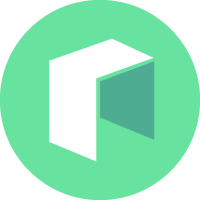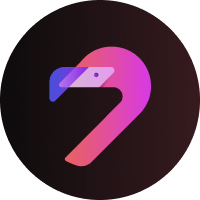
cVault.financeの価格CORE
COREからJPYへの交換
本日のcVault.financeの現在価格(JPY)
cVault.financeの価格は今日上がると思いますか、下がると思いますか?
cVault.financeの市場情報
cVault.finance (CORE)について
cVault.financeとは?
cVault.financeは分散型金融(DeFi)プラットフォームであり、イールドファーミングにおけるインフレトークンモデルにありがちな落とし穴に対処することを目的としている。2020年9月にイーサリアムのメインネット上でローンチされたcVault.financeは、COREとして知られるデフレガバナンストークンを導入している。このトークンは、ステーキング、イールドファーミング、利益を生み出す戦略の自律的な実行に参加するために使用される。このプラットフォームは、コミュニティを中心としたガバナンス・モデルによって運営されており、DeFiの中で最も強力なガバナンス・モデルのひとつである。COREトークンの保有者は、流動性プールの形成や解散など、プロトコルの開発に関する意思決定プロセスにおいて実質的な影響力を持っており、このプラットフォームが真の分散化に専念していることを強調している。
関連資料
公式ウェブサイト https://corefinance.eth.limo/
cVault.financeの仕組み
cVault.financeは「デフレ・ファーミング」の原則に基づいて運営されており、報酬として新しいトークンを鋳造する標準的なDeFiプロトコルとは異なるコンセプトを持っている。cVault.financeはトークンの供給量を増やす代わりに、トークンの送金に1%の手数料を課し、この手数料を流動性プロバイダーへの報酬に充てている。この仕組みは、COREの価値が維持されるような持続可能な収量農業環境を作り出すことを目的としている。さらに、市場の安定性を確保し、トークンの価値を不安定にする可能性のある流動性の撤退を防ぐため、流動性はUniswapプールに恒久的に固定されます。このプラットフォームのユニークな点は、COREトークンを新規発行せず、10,000トークンの固定供給を維持するというコミットメントである。
cVault.financeトークンとは何ですか?
COREはcVault.financeのエコシステムのメイントークンである。非インフレ型の暗号通貨として設計されており、利益を生み出す戦略の自律的な実行を分散的に促進する。COREの保有者はストラテジー契約を提案し投票することができ、承認されるとプラットフォームによって実行される。このガバナンス・メカニズムは、これまで類似のプラットフォームでは失敗の中心点であった戦略実行への分散型アプローチを可能にする。これらの戦略から生み出された利益は、部分的にCOREの市場購入に使用され、その需要と価値を本質的に増大させる。流動性生成イベントによる最初の分配と、その後の流動性トークンの恒久的なロックにより、COREは安定した経済モデルを提供する。循環供給が決して増加しないことを保証し、エコシステムが進化するにつれて継続的なデフレ圧力を生み出す。
何がcVault.financeの価格を決定しますか?
cVault.financeのCOREトークンの価格は、そのユニークな経済モデルとDeFi市場の包括的なダイナミクスに内在する要因の組み合わせによって影響を受けます。その核心は、トークンのデフレ的性質が極めて重要な役割を果たしていることだ。10,000個のCOREトークンが固定供給され、新しいトークンを鋳造する可能性はないため、トークノミクスは希少性主導の価値提案を促すように設計されている。DeFiセクターが拡大し、革新的な収量農業ソリューションへの需要が高まるにつれて、限られた供給がCOREトークンの価格を押し上げる可能性がある。
さらに、cVault.financeは、インフレと価値の希薄化につながるDeFi領域で一般的な新しいトークンの鋳造に頼らないデフレ・ファーミング戦略を採用している。その代わり、エコシステム内で収集された取引手数料は流動性プロバイダーに再配分され、買い圧力が増幅され、結果としてトークン価格が上昇する可能性がある。さらに、このプロトコルの設計は、Uniswapに追加された流動性を恒久的にロックし、安定した市場を作り出し、COREトークンのプライスフロアを確立します。つまり、COREトークンの価値は、暗号通貨市場でしばしば観察されるボラティリティからある程度保護されている。
最後に、cVault.financeのガバナンス・モデルは、COREトークン保有者に主要なプロトコルの決定に関する議決権を与えるもので、トークンの評価にも影響を与える可能性がある。新しい流動性プールやストラテジーの導入、手数料配分の変更などの決定は、コミュニティが行う。この非中央集権的なガバナンス・アプローチは、プロトコルの成功に最も投資しているステークホルダーがその方向性を推進することを保証し、トークンの有用性、需要、そして最終的には市場価格を高める選択を導く可能性がある。他の資産と同様に、投資家のセンチメントや市場動向とともに、需要と供給の相互作用が、ブロックチェーンファイナンスの複雑で進化し続ける状況の中で、cVault.financeのCOREトークンの価格の軌跡を形成し続けるでしょう。
cVault.financeのAI分析レポート
cVault.financeの価格履歴(JPY)
 最低価格
最低価格 最高価格
最高価格 
cVault.financeの最高価格はいくらですか?
cVault.financeの最安価格はいくらですか?
cVault.financeの価格予測
COREの買い時はいつですか? 今は買うべきですか?それとも売るべきですか?
2026年のCOREの価格はどうなる?
2031年のCOREの価格はどうなる?
注目のキャンペーン
cVault.financeのグローバル価格
よくあるご質問
cVault.financeの現在の価格はいくらですか?
cVault.financeの24時間取引量は?
cVault.financeの過去最高値はいくらですか?
BitgetでcVault.financeを購入できますか?
cVault.financeに投資して安定した収入を得ることはできますか?
cVault.financeを最も安く購入できるのはどこですか?
今日の暗号資産価格
暗号資産はどこで購入できますか?
動画セクション - 素早く認証を終えて、素早く取引へ

COREからJPYへの交換
COREの各種資料
Bitgetインサイト





Bitgetに新規上場された通貨の価格








